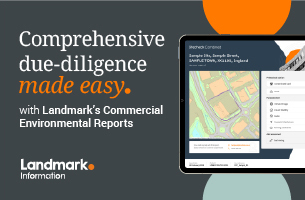
McCloud: Guide would reduce conflict
The International Legal Technology Association (ILTA) has published a draft best practice guide for the use in e-discovery of active learning (AL), a form of machine learning which can update and change its predictions as additional documents are reviewed.
Retired High Court master Dr Victoria McCloud said that in the “developing field” of artificial intelligence (AI) in law and “in the face of court backlogs”, the guide could “reduce conflict” between opposing sides over the technicalities of AL.
ILTA hopes that, following a consultation, the guide will be approved by the Master of the Rolls, Sir Geoffrey Vos, and the Civil Procedure Rules Committee.
A spokeswoman for ILTA said the draft guide aimed to encourage the use of AL technology by outlining a “consistent process” for lawyers to follow.
She explained that AL applied AI principles to enable e-discovery to “self-adjust, dynamically, based on learning from the document dataset in the case”.
This led to benefits in effectiveness and efficiency, but it was “essential that parties know how and when it is being applied by opponents because it can shape the nature of which documents are disclosed”.
Though existing court rules and practice directions encouraged the use of e-discovery software tools, the use of AI in AL was “not the subject of specific guidance”, and there was “a risk of negative impact on justice if techniques are inconsistent between parties or across the industry”.
The draft guide was drawn up over six months for a special interest group of ILTA by litigation support professionals from a range of large law firms, including A&O Shearman, Linklaters, Norton Rose Fulbright and DLA Piper.
It describes AL as “a machine learning-led process where tagging decisions across a small set of documents are used by the platform to predict the likely relevance of the remaining documents” in a review database.
“An essential feature, which separates it from other machine learning-led tools, is its ability to update and change its predictions throughout a review as additional documents are reviewed and coded.”
AL was “not often used” in contentious document reviews of under 20,000 documents but could be used “successfully in very small reviews of even a few hundred documents” if no validation process was required.
Among the “key takeaways” highlighted in the guide were that legal teams should “expect to use” AL on any “pool of potentially relevant items above 50,000 and consider it for any population above 20,000”.
They should initially plan to review around 30% of the documents in the time available.
On quality assurance and control, the draft states: “The learning is only as good as the teaching. Pay special attention to the first few days of the review process so that all of the first level review work is curated and brought to a similar standard.
“Novice reviewers tend to over-code documents as relevant: Have workflows to monitor (and if needed) correct this tendency.”
Dr McCloud, who is an associate member of Gatehouse Chambers and a consultant to Central London firm W Legal, commented: “In the developing field of AI in law, and in the face of court backlogs this guide, if adopted, would reduce conflict between opposing parties over the technicalities of active learning.
“It would reduce some of the burden on courts of having to resolve arguments on the mechanics of e-disclosure. Active learning in particular is a different beast from conventional search techniques because of its self-adjusting capabilities.
“The power of such a process must be balanced with clarity and this guide is a vital step in that direction.”
For access to the draft, email laura@iltanet.org.













Thank you for the clear explanation Vicky. This is an exciting prospect for speed and cost cutting.